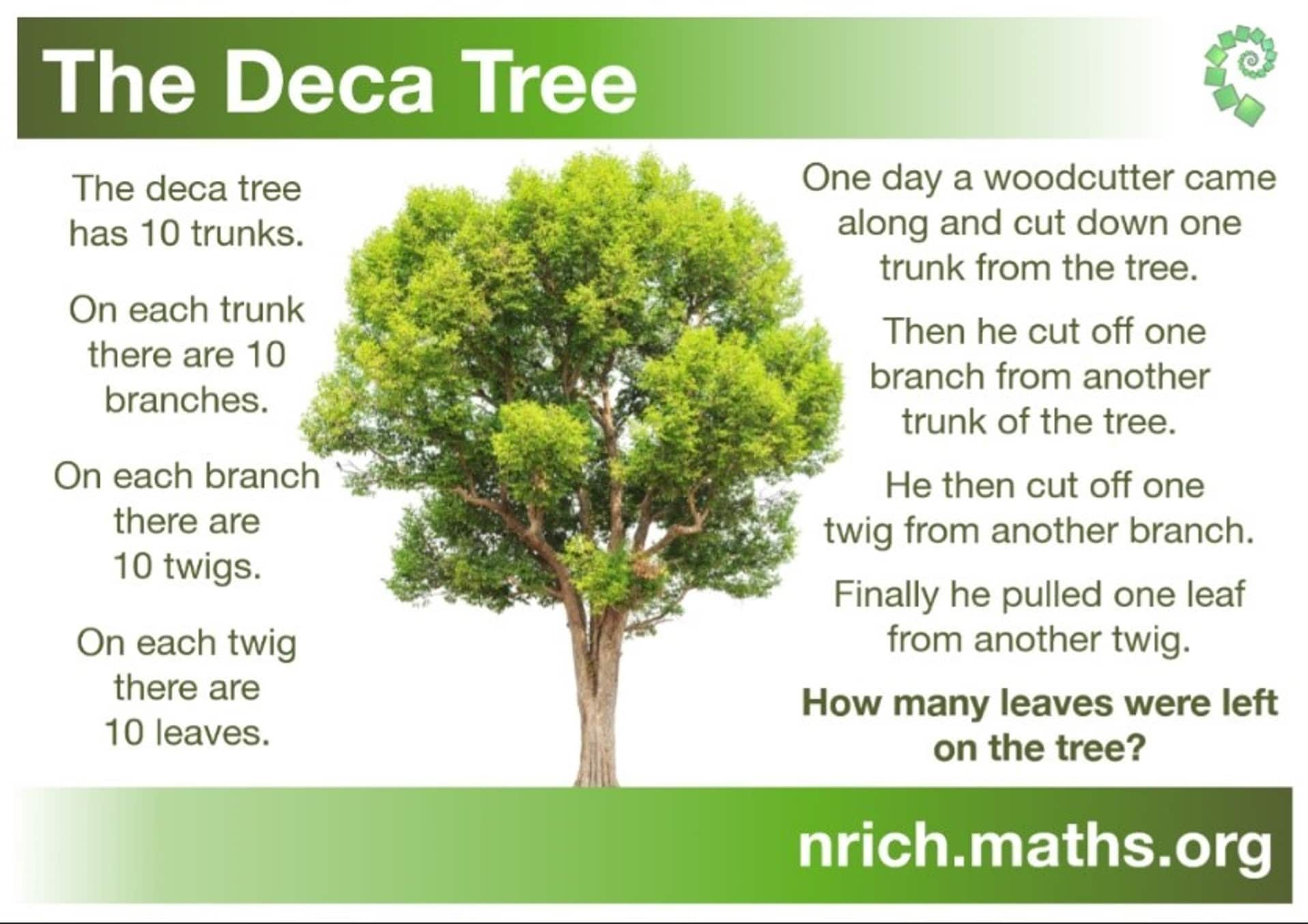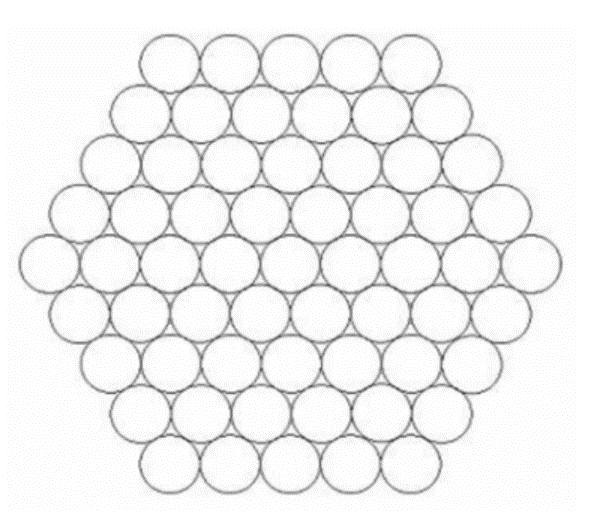Thriving beyond the classroom: three crucial transferable skills you can develop through maths
Power of Maths Spotlight with Dr Ems Lord, NRICH
As Artificial Intelligence (AI) platforms rapidly increase their capability to perform both routine and not-so-routine tasks, they force us to reconsider which life skills we should be nurturing among young students.
Recent studies indicate that those students who are willing to work flexibly, enjoy teamwork, ask questions and solve problems, and who have developed a resilient approach to approaching challenge, should thrive both within and beyond the classroom (OECD, McKinsey and Co).
Let’s explore two of those crucial skills further – perseverance and curiosity.
Perseverance
Have you ever found yourself watching someone struggling to loosen a rusty chain on an old bike or release the retaining bolts on a car’s wheel? They’re common problems and can be deeply frustrating, demanding perseverance to achieve the desired result.
Such perseverance might require trying different tools to help loosen the rusty item or seeking advice from others – key problem-solving skills students need to develop throughout their schooling in readiness for their later lives.
To loosen that chain, or release those bolts, they might be advised to reach for a can of WD40. (Other spray-on lubricants are available!)
The story behind the name WD40 is a great reminder about valuing perseverance in our lives. The scientists behind the product in the familiar blue and yellow canisters with their red lids had been trying to find a formula which displaced water on metal, but they were struggling badly; they failed once, twice and more!
In fact, and you’ve probably guessed where we’re going here, they only achieved their desired result after their 40th attempt at developing and testing a formula.
It’s a fantastic example to share with students about the need to develop their perseverance.
Although recognising that perseverance matters is important, students need regular opportunities to do so; this is where studying maths can really help. Through exploring longer problems, or those which can be solved in more than one way, they can build a more resilient approach which will enable them to overcome obstacles and develop a willingness to change approaches when it would be helpful to do so.
For example, there’s a lovely NRICH problem called The Deca Tree which introduces a very special tree with ten trunks. The tree has ten branches, and those branches each have ten twigs with ten leaves on each of them.
Got that? Now imagine that one day a woodcutter came along and cut down one trunk from the tree. Then they cut off one branch from another trunk of the tree. Then they cut off one twig from another branch. Finally, they pulled one leaf from another twig.

Figure 1: The Deca Tree – reproduced with permission of NRICH, University of Cambridge, all rights reserved.
Hopefully, your curious students will already be wondering how many leaves were left on the tree. After they’ve had a go at working it out for themselves, they can compare their solution with those submitted by other students. The detailed solutions on offer highlight the benefits of developing a ‘persist approach’ towards solving problems in and beyond the classroom.
Although being persistent is a key transferable skill, solving the Deca Tree also highlights the importance of valuing curiosity too.
Curiosity
Experts tell us that the curiosity which leads young children to ask seemingly endless streams of questions starts to decrease before they leave primary school (Ward & Quennerstedt, 2019). That’s such a shame because being curious and asking questions is a lovely way to engage students and help them to discover their amazing world.
However, it’s not always easy knowing which questions to ask, so it’s useful to know one or two tried and tested strategies for getting started.
I remember a wonderful talk by the former Ofsted Lead for Maths, Jane Jones, who opened her talk for a room packed with teachers by displaying a diagram taken from a GCSE paper – without the accompanying question!
Our challenge was to suggest possible questions that the examiners might have asked the students. Engaged by the diagram, and unrestricted by knowing the actual question, our curiosity ran riot and a long list of possible questions was swiftly added to the flipchart.
Try it yourself! Here’s a diagram taken from an NRICH problem - what was the question?

Figure 2: Steel Cables – image reproduced from NRICH, University of Cambridge, all rights reserved.
Perhaps the picture prompted asking how many ends of cables could be seen. Maybe you went further by wondering how many cables there could be on the next layer, or even generalised a rule.
Whichever approach you took, thinking about the questions helps us to engage with a problem and encourages us to want to know the answer.
Well-known US-based maths teacher Dan Meyer says he enjoys building on his students’ natural curiosity by asking them to predict their answers before they work them out. Dan tends to teach challenging classes where maths is not the reason learners went to school that day, preferring sports or catching up with friends over algebra or geometry. He therefore needs to draw those students in via their natural curiosity and then encourage them to develop their perseverance to find the answers.
Typical challenges for Dan’s students can involve how long it might take for a water butt to empty, or whether a basketball player will successfully score with their shot. Dan collects their predictions, valuing their ideas, and then encourages his curious students to test them out.
No-one wants to leave his class until they know the answers! You can learn more about Dan’s approach in this video recorded at the University of Cambridge.
In this article, we’ve explored ways to nurture two crucial transferable skills – curiosity and perseverance – through maths.
You can find out more about other transferable skills which can be developed and embedded in maths lessons by reading the excellent paper Habits of Mind by Al Cuoco and colleagues, and by exploring the free Habits of Mind collection of activities available on NRICH.
Pearson’s Power of Maths campaign works to ensure that everyone can engage with maths and what it can do. Whether it's tackling issues facing maths education or promoting maths positivity, we're focused on working alongside leading thinkers and organisations to help build a number-confident nation.
Discover Pearson’s range of qualifications and resources, creating pathways for all students to succeed in maths.
Join the Power of Maths community here.

About the author
Dr Ems Lord is the Director of NRICH, the multiple award-winning maths outreach project based at the Faculty of Mathematics at the University of Cambridge and is a valued member of the Power of Maths community.
Ems holds a Research Fellowship in the Sciences at Clare Hall College, University of Cambridge, and she is the Chair of The Mathematical Association (having previously been President). Ems is a fellow of The Institute of Mathematics and its Applications and a Founding Fellow of the Chartered College of Teachers as well as being a regular contributor to the All-Party Parliamentary Group for the Teaching Profession and a member of the Joint Mathematical Council.
Ems has taught mathematics across the key stages, from Early Years to A Level Further Mathematics, and has worked in a variety of settings including a hospital school. Her previous roles include supporting schools as a Leading Mathematics Teacher, local authority consultant and as a Chartered Mathematics Teacher. Ems led one of the largest Masters-level Mathematics Specialist Teacher (MaST) programmes and has taught mathematics education on both BEd and PGCE teacher programmes, and now supervises Masters students.